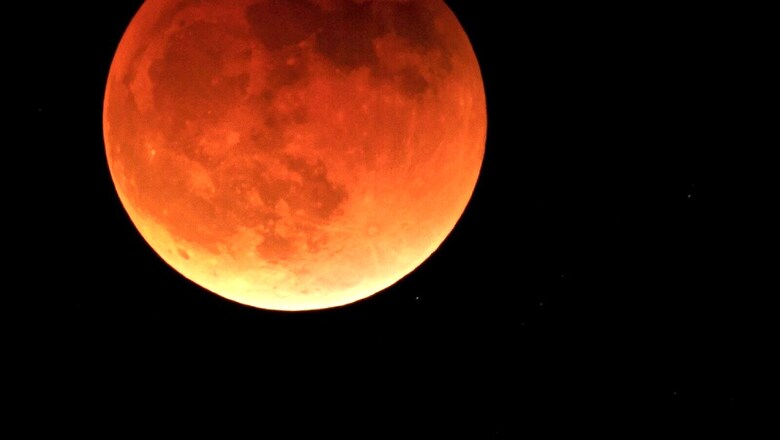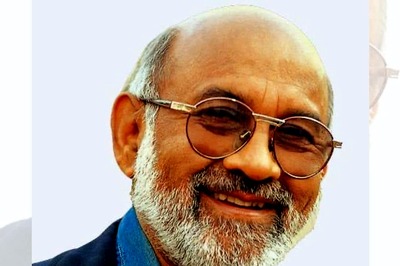
views
Night-time sky watchers across the world better catch the moon’s disappearing act on Tuesday night, as there won’t be another such celestial event for the next three years. The total lunar eclipse will be visible throughout North America in the predawn hours, and across Asia, Australia and the rest of the Pacific after sunset.
As an extra treat, Uranus will also be visible just a finger’s width above the moon, resembling a bright star.
The lunar eclipse will be visible from all parts of India during the moonrise, however, the beginning of the partial and total phases of the eclipse will not be visible from any place in the country as the phenomena will be in progress before moonrise, the Ministry of Earth Sciences said in a release.
The ending of both the total and the partial phases would be visible from the eastern parts of the country, the ministry said in the release.
When Are Where To Watch Eclipse In India
The eclipse will begin at 2.39 pm according to Indian standard time (IST), while the total eclipse will start at 3.46 pm, the ministry said.
Meanwhile, the ending time of totality is 5.12 pm and the ending time of the partial phase is 6.19 pm.
The sky watchers in eastern parts of the country, like Kolkata and Guwahati, can watch the moon’s disappearing act at the time of moonrise, when the total phase of the eclipse will be in progress.
For other cities like Delhi, Mumbai, Chennai and Bengaluru, the partial eclipse after the end of totality will be in progress at the time of moonrise. For moon watchers in Delhi, the duration from the moonrise time up to the end of the partial eclipse will be 50 minutes, for Mumbai 18 minutes, for Chennai 40 minutes and for Bengaluru it will be 29 minutes.
The next lunar eclipse which will be visible from India is on October 28, 2023, and the same is a partial eclipse.
The last lunar eclipse which was visible from India was on November 19, 2021, and it was a partial eclipse.
The Blood Moon
Known as a ‘Beaver blood moon’, the eclipse will appear a reddish-orange from the light of Earth’s sunsets and sunrises. At the peak of the eclipse, the moon will be 242,740 miles (390,653 kilometres) away, according to NASA scientists. Binoculars and telescopes will enhance viewing, provided the skies are clear.
What Causes Lunar Eclipse?
Lunar Eclipse occurs on a full moon day when the earth comes in between the Sun and the moon and when all three objects are aligned.
A total lunar eclipse will occur when the whole moon comes under the umbral shadow of the Earth and a partial lunar eclipse occurs when only when a part of the moon comes under the shadow of the Earth.
Read all the Latest India News here


















Comments
0 comment